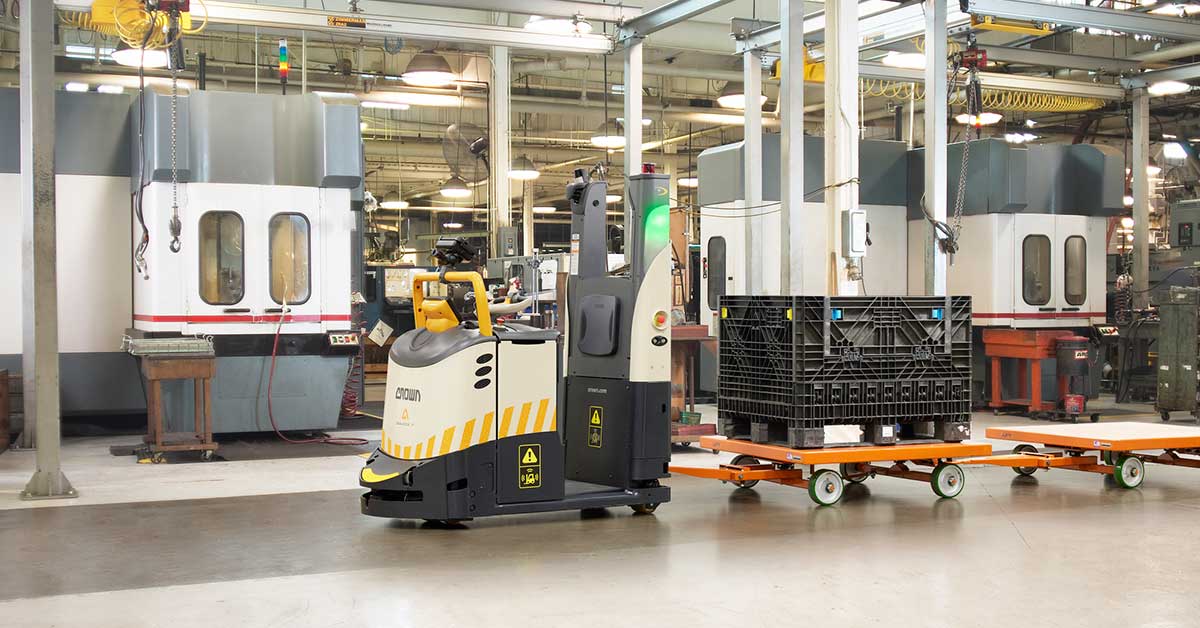Planning for Uncertainty Cultivates Consistency

While supply chain uncertainty has been in the news much more lately, it has always existed to some degree, even under the best conditions. Lately, though, as demand has increased, and e-commerce has become ever more prevalent, operational uncertainties have loomed largely over warehouse capacity and the workforce.
Warehouses and distribution centers across the country are experiencing the need to increase throughput. Companies may find themselves in a bind with the shortage of workers to meet these demands. Whether it is an issue of recruitment or retention, these circumstances have placed an incredible amount of stress on an already exhausted workforce.
Companies are beginning to learn that automation, like use of automated forklifts for example, can help provide a long-term solution to supply chain uncertainties. Integrating automation technology into your facility can also help in developing or improving your operational standards, providing the consistency and reliability needed to succeed in today’s difficult supply chain environments. While some think that the increases in productivity and efficiency delivered through automated technology helps displace employees, automation can offer new growth opportunities for current employees and assist in attracting new candidates to your facilities.
Knowing when the time is right
Companies may be cautious and even skeptical about the benefits of automation within their warehouses and distribution centers. They may think there is an advantage to waiting until all the “kinks” are worked out and every question concerning new technology has been answered.
The truth is that there may actually be disadvantages in waiting for the perfect time to implement automation. Many of the warehouse challenges mentioned here can be either solved—or significantly reduced—with today’s automation technologies. Today’s automated lift trucks have advanced to the point where they can adapt to new processes, changing conditions and warehouse environments.
For those that think getting started now means missing out on better options later, the technology deployed today can grow with you. Software updates are often used to add new capabilities and functionality that were unavailable when the technology was initially deployed.
There are also lessons and best practices that can be learned when you implement sooner rather than later. Your operation will have its own challenges and issues specific to its unique environment, processes and applications. The best way to identify and address these challenges is through the planning and implementation process.
Automation breeds enhanced operational consistency and reliability
When you look around your facility, do you see palletized materials that aren’t cleanly stacked or shrink-wrapped? Is wrapping often found dangling from the warehouse racks or lying listlessly in your aisles? These all represent opportunities to improve the consistency and reliability of your operations. Bringing automation to your facility can help address these opportunities and improve your operations as a whole.
Typically, companies do need to make changes to their operational processes when integrating new technology. For example, an automated forklift for pallet putaway and retrieval, like the Crown R 1000 Series DualMode reach truck, requires standardizing the handling and condition of pallet loads. Something as simple as shrink wrap can impede the function of automation and bring systems to a stop.
Initially, addressing something like dangling shrink wrap may sound like more of an inconvenience than a benefit, but uniformity and quality assurance in pallet loads help facilitate consistency and improve efficiency and productivity. As your processes become more standardized, the better automated forklifts can interact with the environment. Identifying and implementing opportunities for improved standardization can positively affect warehouse operations for the long term.
But how does automation help employees?
One of the main goals of automation deployments is to increase productivity by reducing or eliminating repetitive tasks while better leveraging the skills and expertise of existing workers. Complementary operator assist technologies can help support this goal by creating a more comfortable working environment and enabling higher productivity for workers supported by automation.
For example, low-level order picking is one of the most physically demanding and resource-intensive tasks in the warehouse. It is not uncommon for order pickers to walk 5-10 miles every shift. The introduction of operator assist technologies, such as Crown’s QuickPick® Rapid, to this task can help reduce its strenuous nature and enhance employee comfort and productivity. Crown’s QuickPick technology allows operators to maintain a smooth workflow pattern, focusing less on positioning the vehicle and more on the task of picking.
There’s no reason to wait
Uncertainty is bound to exist. Whether uncertainty stems from the supply chain, consumer demand or workforce issues, there are opportunities to reduce uncertainty through automation and improved operational standards. By implementing automation now, you can identify improvement opportunities and enhance the functionality of your processes, while increasing productivity and creating a more attractive work environment for your employees. Who would want to wait for that?
Learn more about what automation can do for your facility by visiting the Automation Solutions page on crown.com.